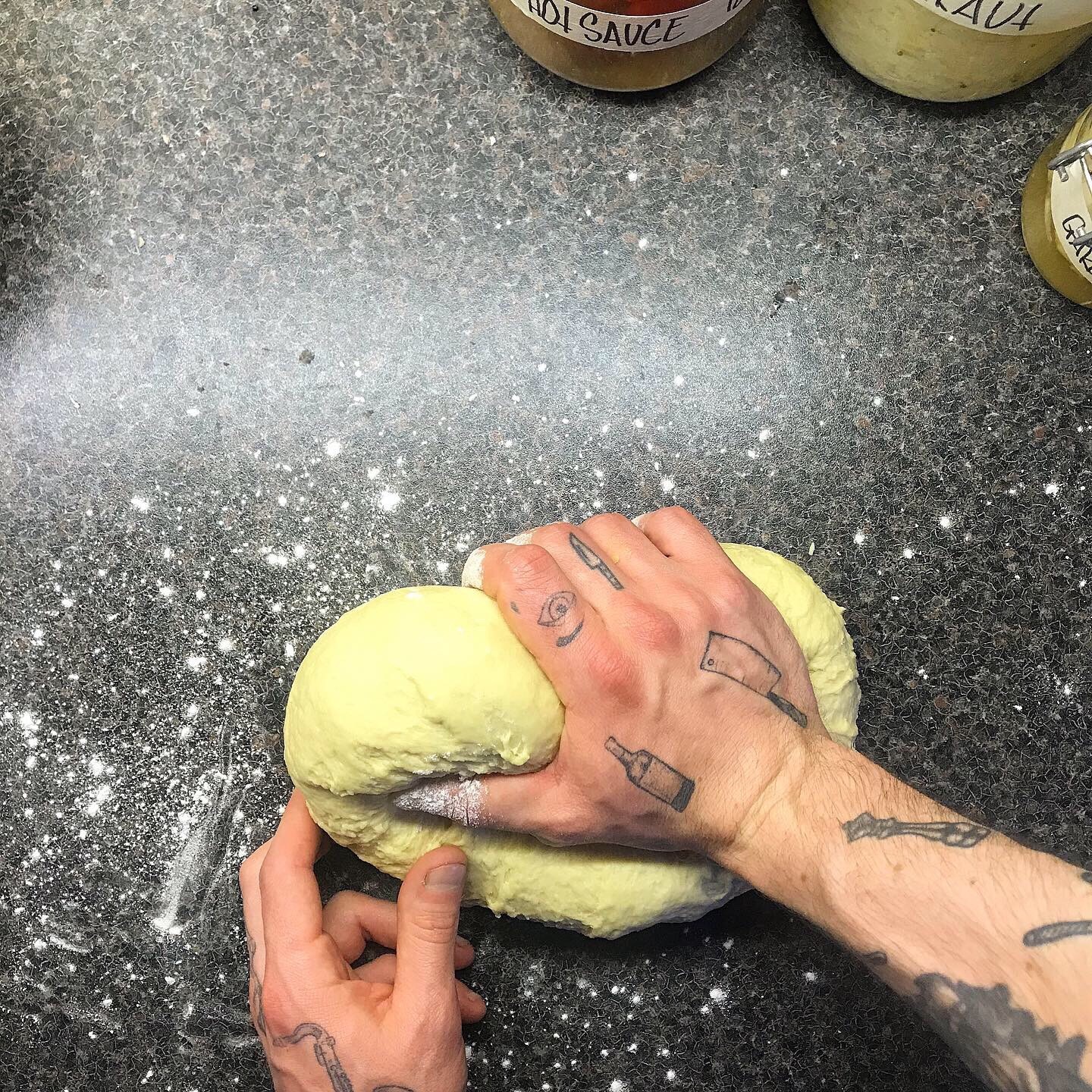technical info / nerd shit
you should know whats up
sourdough.
- when you start looking into the science of anything really, it gets a bit mad. but if you are interested in mastering your craft, its useful to know some hard facts and how things work.
fermentation.
- yeast and bacteria are already present in the air & flour.
as wheat flour hydrates, the enzyme amylase breaks down the carbohydrates into sugars, which are then broken down further into glucose and fructose, which are food for the wild yeast to begin fermentation. there are two types of fermentation here, aerobic and anaerobic.
aerobic.
- This type of fermentation produces carbon dioxide, which is what makes the starter bubble and full of life.
anaerobic
- This produces alcohol, which separates to the top of the starter, sometimes called ‘hooch’.
*mixing your starter well when feeding will help aerate it and dissipate the co2 on the surface.
**fun fact: yeast fermentation also produces traces of ‘glutamate’, a component of ‘MSG’, adding a more savory depth of flavor.
- ‘lactobacillus brevis’ is the chemical name of the lactic acid present during this type of fermentation. This is what creates the acidic note to your starter, while the yeast provides the leavening action for the dough.
- the bacteria consume glucose and produce lactic acid, so it generally has a lower ‘ph’ than bread made with commercial yeast. (it creates an environment unfriendly to pathogenic bacteria).
*chlorinated tap water should be avoided when possible, it will inhibit yeast action.
- unbleached flour provides a better raw material for a starter. for example rye flour contains more nutrients and sugars for the yeast to feed on, and this flour can be phased out later.
- when creating your starter, mix vigorously or blend to encourage aerobic fermentation.
- 20-22 degrees is the ideal storage temperature for your starter to thrive.
*starter can be frozen or dehydrated for storage, and can be revived at room temperature with regular feeding.
autolysing
- a fancy word for hydrating your flour, before adding your starter/yeast. an important step for incorporating air into your bread, but you only really need to know the official word if you want to show off on instagram that you are baking all sorts of delicious hydrated goods and shit.
- this involves mixing your flour and water together and letting it rest, before adding your leavening agent and salt.
- flour absorbs water, activating enzymes that stimulate proteins to begin gluten development.
- starch is also converting to sugar that will feed the yeast during the bulk proof. *this will reduce kneading time, and prevents over oxidized dough that can affect colour, flavor and texture.
- if you have a higher percentage of whole grain flour = longer rest time.
*when using stoneground flour, be aware of extra moisture, coupled with larger microscopic starch, which has a slower hydration, increasing more gluten and bonds
